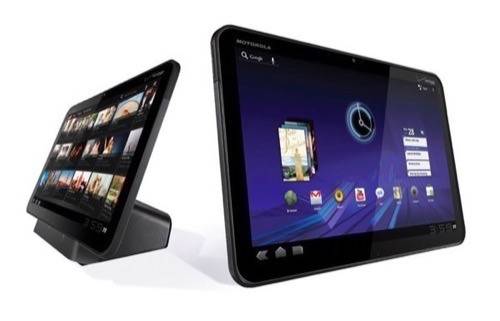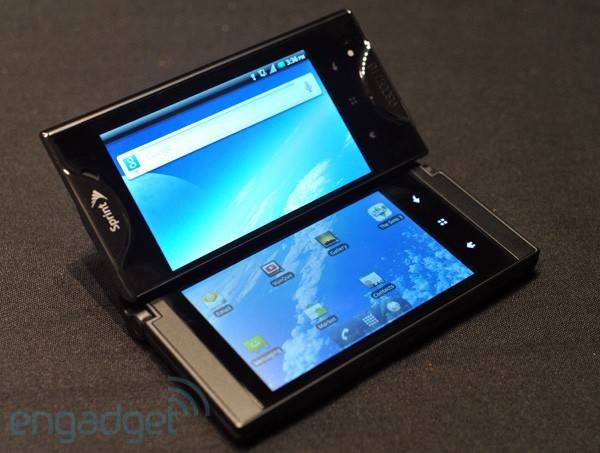There’s an interesting trend happening in mobile these days. Companies – major companies like Samsung, Motorola, Kyocera, RIM and Microsoft – are launching unfinished, unpolished products and then asking us, the consumers, to buy them based on their “potential.” Despite the fact that the new BlackBerry tablet computer has no email client or wide selection of apps, or that Microsoft’s Windows Phone 7 can’t even multi-task, or that Android Honeycomb is only a few months old and, frankly, still a little buggy, we’re expected to place our hard-earned dollars, and, in some cases, even sign multi-year mobile contracts for these gadgets, based on “what could be.”

Not biting? Well, you’re not alone.
Note: This is an op-ed.
Too Many Prototypes, Unfinished Products
Androidtabletsaren’t selling well. The Motorola Xoom, specifically, may have bombed. Windows Phone isn’t selling well. And the PlayBook? Too soon to tell. Meanwhile, Apple is pulling in record-breaking numbers. Unlike much of its competition, Apple doesn’t launch prototypes or unfinished products. Not surprisingly, it’s a strategy that seems to work.
This thought occurred to me as array of gadgets crossed my desk over recent weeks.
Windows Phone 7: Waiting for the Big Update, New Hardware
For starters, HTC’s HD7, a Windows Phone 7 device which I’ve painstakingly adopted as my primary phone in order to thoroughly test it and understand the end user experience. (Short conclusion: it’s not ready).
Microsoft touts its numbers – registered developers, downloads of its development tools, number of applications. But it won’t say how many phones have been sold. Not because it doesn’t know, but because it’s a number not worth bragging about yet.
Tech-savvy early adopters may be see the roadmap ahead for this platform – the planned updates, the apps on the horizon, the new hardware – and get excited about what Windows Phone could be. They can also piece together what the Microsoft/Nokia partnership means for future devices. The combination of Nokia’s hardware design, great cameras, Microsoft’s attractive and innovative operating system design and a big bang of a software update (“Mango,” due out this fall), and Windows Phone has the potential to one day be an important player in mobile, if only the king of the second tier.
Whether the two companies can effectively combine their resources, leverage the appropriate assets and generally make things work is another thing altogether.

Honeycomb: Where are the Apps? The Sales?
Then you have the newly launched Android Honeycomb tablets from Motorola, Samsung, LG and others.
Honeycomb, Google’s tablet-optimized version of its Android mobile operating system was built so quickly that the code base that powers smartphones (Gingerbread) still exists separately from that which powers tablets. Unlike with Apple’s iPad, all Android smartphone apps don’t “magically” work on Honeycomb at present. There are only 100 or so apps that do.
Of course, with Honeycomb, mobile industry insiders can see the potential here, too. When Google launches its next version of Android, the one code-named “Ice Cream” (or “Ice Cream Sandwich”), Android’s smartphone code base and tablet code base will merge and become one. That means it will be easier for developers to make apps that work on both the smartphone and tablet platforms. And Android has a large enough developer base, thanks to its dominating smartphone market share, that many of these developers will do just that. But right now, it’s just too hard. And there’s not an established market for Honeycomb apps as of yet.
That hasn’t stopped companies like Motorola, Samsung and LG from preparing Honeycomb tablets, though, and it hasn’t stopped them from putting those tablets out in the market tied to long-term cellular contracts. And it hasn’t stopped comments like these, from Samsung’s VP of Mobile Lee Don-joo, from making the rounds in the press. “Samsung will have to improve the parts that are inadequate,” he said of the company’s new Honeycomb tablet.
Steve Jobs never called the iPad inadequate.
And we’re surprised that these Honeycomb tablets don’t fly off the shelves?

Bizarre Prototypes
Another product that recently landed in my confused hands this week is Kyocera’s bizarre, two-screen wonder called the Echo. Yes, a dual-screen Android phone.

While I sort of want to applaud a company that tries to think differently about mobile, there’s no other way to describe this phone but to call it, simply, a prototype.
The Echo is a concept device made real. It’s heavy and thick. A brick when shut. There’s a large bezel in between the two screens that, when opened, makes even the two-screen optimized applications hard to fully enjoy. That’s not to say there aren’t some interesting choices, like the YouTube queuing and viewing app, VueQue, or the fun Jibe Social Messenger, both of which have already made themselves two-screen ready.
In practice, however, I don’t love two screens. Not like this. It’s an unfinished product. It’s…well, it’s just weird. And yet, strangely, it’s available for sale now from Sprint. A prototype! It’s shocking. There’s no software update that can fix this phone’s issues. It needs better hardware. It may even need hardware that doesn’t exist yet. Or maybe the core idea is a mistake. Maybe that’s why Microsoft killed its dual-screen Courier tablet. Maybe having two screens is a terrible, terrible idea.
PlayBook Shipped Before Finished
Finally, there’s the BlackBerry PlayBook.
Decent enough hardware, easy to pocket thanks to its 7-inch size. A good Web browser that doesn’t default to mobile views (thank you!). But it has very few applications. And no email client, no contacts, no calendar. What is this thing?

What it is is an unfinished tablet computer. RIM completed the hardware design then shipped, with plans to roll out everything else the tablet needs via software updates, including core applications like email and calendaring. RIM also plans to add support for Android applications at a later date in order to fix the “app problem.” But instead of running any Android app using virtualization techniques, developers will have to take their Android applications and repackage them for the PlayBook.
So will they? It’s hard to say. If RIM hasn’t arrived too late in the years-long trend that has been“the consumerization of I.T.,” there may still be a chance to persuade its enterprise customers to throw the PlayBook into the mix, alongside BES installations and BlackBerry smartphones. Plus, RIM’s “BlackBerry” name may still be just enough of a consumer-trusted brand that non-enterprise customers will buy the tablet, if not in record-breaking numbers, at least at a steady enough pace to give it a chance to grow.
If that happens, then there’s a market for apps. And if there’s a market, developers may then decide to repackage their Android apps for the PlayBook or even build native ones. But even tech bloggers, journalists and analysts can’t foretell the future here. The tablet received mixed reviews in the press, then surprised analysts with not-as-horrible-as-we-thought day one sales (nearly 50,000 units sold). Still, long-term, what chance does the PlayBook have against the iPad2 in the consumer market, a tablet so popular that Apple literally (I’m not being exaggerative here, I mean it literally) can’t make enough?

Why iPad 2 is Winning
The point is, each of these companies is asking consumers to take a risk, to place their bets on what may or may not be the next big thing. But while we lived in a modern, gadget-obsessed world, we still don’t casually throw away hundreds of dollars on what still amounts to a very risky gamble.
Many consumers wait for a company to tell them, “this is the answer, this is beautiful, this is perfect.” Apple’s messaging does exactly that, and while, on a personal level, the increasingly pretentious commercials drive me a little batty at times, (“when technology gets out of the way…that’s when you leap forward…iPad2”), at least Apple isn’t asking for us to believe in a prototype.
The everyday consumer doesn’t buy a product based on its “potential.” They buy based on what works, what they can afford and what they’re told is good.
Sadly, there’s no way around the fact that companies have to rush to ship in order to have a chance at catching up to Apple’s already dramatic lead here, but it’s also the very thing that’s causing these products to either fail, stagnate, or just barely hang on as the companies quickly try to ramp up behind-the-scenes.
Wouldn’t it be great to see something finished, polished, complete, perfect and downright disruptive, from someone else besides Apple? I’d welcome the change, but even as Windows Phone-using, Android-loving, PlayBook-testing, iPad-owning gadget fan, I don’t believe that day has arrived yet. What we have instead is a lot of spaghetti thrown against a wall, and some that will stick.
What will your next gadget be? Choose wisely, you have a lot of money riding on that bet.
Image credits, Nokia phones, Kyocera: Engadget, and Engadget




















